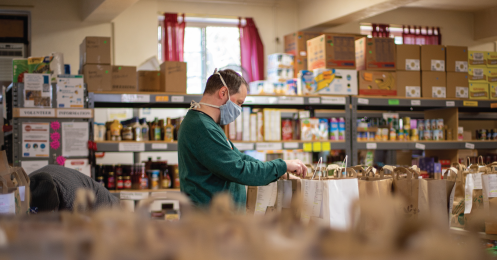Post Updated: April, 2020 - Blue Link no longer supports Food Banks
Please note that while much of the functionality listed below is still relevant to Food Banks and Food Pantries, Blue Link ERP software no longer supports food bank organizations and has stopped developing the system for that specific target market. Instead, Blue Link has decided to focus it's efforts on wholesale and distribution businesses that buy and sell food-related products.
This post outlines functionality one should expect from Food Bank Software.
Medium and large food banks operate in a similar manner to any other distribution business, and therefore their software requirements are also similar. As a result, many food banks have successfully implemented distribution software to manage their operations. The most successful food banks tend to invest in automated processes, just like any other business. This post will examine, briefly, some of the key features to focus on in a software package appropriate for food banks.
Key Features
- Tracking purchased and donated goods
- Handheld picking/barcode scanning solutions
- Detailed stakeholder reports
- Lot tracking
Tracking Purchased vs. Donated Goods
Many food banks are unable to meet the needs of their agencies on donated food alone. As a result, some items are purchased in order to meet the needs of the community, and frequently the same type of food items that were donated are also purchased to augment quantities. Proper food bank software should be able to track both donated and purchased goods for detailed reporting and analysis by category. The software should allow you to pick and allocate both donated and purchased goods to agencies, as required. (Some agencies may mandate only donated food, or no donated food, for example.)
Handheld Picking Solutions
Wireless handheld solutions can help to increase efficiency in picking and receiving operations. Instead of carrying around pen and paper, warehouse employees can use a scanner to quickly identify and allocate goods to an order, both from designated donated and purchased inventory. The software should automatically organize picking in an efficient manner to minimize walking through the warehouse.
Detailed Stakeholder Reports
It's common for a food bank's management team to report to a board or upper management, and real-time key inventory data will enable that reporting without a huge manual effort each time, helping to keep operations humming along. Some key reports that may be useful include: Item by Category reports looking at purchased vs. donated goods, Agency Fulfillment (are agencies getting everything they need?), and demand by season / weather. Good food bank software will deliver key reports to you automatically via email or other means, at pre-defined intervals such as daily, weekly, monthly etc.
Lot Tracking
Lot tracking is not employed by many food banks, but is highly recommended for any operation dealing with food. Particularly when it comes to purchased product, it is important to track the goods' origin in order to be able to recall product from agencies when required. Without lot tracking it can be very difficult to recall food that may be contaminated or deemed unsafe.
These are just a few select food bank-specific features to keep an eye out for when searching for a system. Obviously having a single integrated system that includes accounting, inventory and customer management combined with the features above is ideal.










